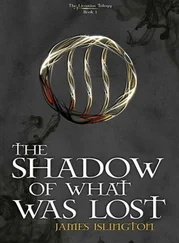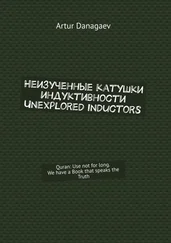In the morning he would go down to the ritual bath and immerse his thin body in the water, then recite the morning prayers, return home and eat a piece of honey cake dipped in brandy, and fortify his weak body with a very light repast. After that he would go back and immerse himself again in the ritual bath, and then turn his heart away from all worldly matters. All day he sat in his house communing with his soul in solitude, completely within the frame of Torah. He did not mingle with other human beings and was thus saved from any of the transgressions between man and man, and remained holy in his speech, thought, and deed, and was spared all temptation and distraction. He sat secluded and isolated, and no one was with him except His Name, may He be blessed, and he studied a portion of the Talmud in order to tie together the oral teachings with the written ones, and concentrated on all the sacred meanings hinted at in Scripture. He was careful never to write the Holy Name without first having purified his body. For this reason he often wrote an entire sheet of parchment but left blank the spaces for the Holy Name, and later he wrote the Name in the blank spaces only after having immersed himself again in the purifying ritual bath.
He may thus be likened to a craftsman making a crown for a king: does he not first make the crown and then set into it the diamonds and other precious stones? Thus Raphael sat and wrote, until the beadle came, knocked on the window, and announced that the time had come for the afternoon prayers.
3
How good is a word in its proper time. Having told of his way in his sacred work, let us now note the place of this work.
He lived in a small house close to the big synagogue and to the old house of study and to other houses of prayer, a few steps from not to be mentioned in the same breath — the bathhouse that contained the ritual bath. His house was small and low. It had only one room, which was divided in the middle by a partition made of boards. On the other side of the partition there was an oven and a range for pots, and between oven and range the pious and modest mistress of his house sat, and she cooked and baked and preserved and wove and knitted and looked to the needs of her home. Children they had none. Because the Holy One, blessed be He, desires the prayers of the righteous, He closed her womb.
When she completes the tasks that a wife is required to perform for her husband, she takes out a used garment and remakes it into clothing for an orphan. She is especially fond of this task because it enables her to sit quietly, to pull thread after thread, and in her thoughts take stock of the world. And in order to avoid doubts, Heaven forfend, about God’s ways, and not to complain, Heaven forfend, against Him, she recalls several pious tales of salvation. For example, the story of a childless woman like herself who saved money in a stocking to buy a ruby, which is a proven remedy against childlessness. Then she saw the officials of the Society for Clothing the Naked, and gave them all the money, and in addition sewed clothes for the orphan children. Not many days later her womb was blessed, and out of her came affluent men who served God in comfort.
Or another story about a woman who was making a small tallit for an orphan, and suddenly she felt that the ritual fringes were being pulled and drawn upward, and a fragrance like that of the Garden of Eden was all around her. When she looked up she saw Reb Gadiel, the infant who had been born by virtue of his father’s having taught Torah to Jewish children; Reb Gadiel was kissing the ritual fringes she had made, and she heard him say to her: “Know that your deeds are acceptable on high, and that you will yet merit making ritual fringes for your own sons and sons’ sons.” Not many days later she was rewarded and her womb was blessed, and out of her came righteous, God-fearing, good men, taken up with Torah and God’s commandments. And this birth was out of the ordinary, because that woman had been barren by nature.
Thus the pious Miriam sits, drawing thread after thread, and a thread of mercy is drawn and extended on high, and good angels bring up before her various fantasies: for example, that she is preparing a garment for her son who is sitting in his schoolroom and studying Torah.
From time to time she raises her pure eyes toward Raphael, the husband of her youth, who sits on the other side of the partition, near the window, at the clean table covered with a tallit. Also on the other side of the partition are a wardrobe and a bed. The bed is covered with a colored, clean spread, and the wardrobe contains rolls of parchment and sacred implements. In it her white wedding dress hangs, and in it also earth from the Land of Israel lies hidden away.
Across the top of the room a dart beam stretches from one end of the house to the other. On top of the beam there are a number of sacred books: some new, some old; some thick, some thin; some bound in cured sheepskins and some in a plain binding.
Near the beam, to the right, on the eastern wall, is the embroidered wall hanging Miriam had made in her youth at her father’s house. It depicts a garden full of fruit trees, with a palace in the garden, and two lions watching over the garden. The lions’ faces are turned toward each other, lion facing lion, one tongue reaching out toward the other; and stretching from tongue to tongue there is an inscription in large letters of gold, which says, “The earth is the Lord’s and the fullness thereof,” as if it were one mighty roar. In each of the four corners of the embroidery there is a square that contains the words: “I have set the Lord always before me.”
Facing the east-wall embroidery, on the opposite wall, there is a mirror, and on top of its frame lies a bundle of willow twigs. Each year, on Hoshana Rabbah, Miriam brings home a bundle of the twigs that had been beaten against the prayer lecterns in the synagogue as part of the liturgy. A number of women had already been helped at childbirth by water in which such willow twigs were boiled. Only she herself has never yet made use of that water. The willow twigs continue to wither, and leaf after leaf is shed into the web that the spider has spun over the amulet that is near the bed. Her mother had given her the amulet on her wedding day to help keep away from the house the evil spirits that prevent births.
The amulet is written in the letters of the sacred alphabet but in the tongue of the Gentiles, Yak krova mloda , etc., meaning, “When the cow is young and healthy, why should she not give birth to a calf?” It was written for her mother, peace be upon her, who had been childless for a number of years, by Rabbi Simon of Yaroslav during his stay at the inn operated by her mother. He wrote it at the insistence of several righteous rabbis, while she cooked red borsht and potatoes for them after they had gone without food for three days on their journey to their saintly rabbi, the Seer of Lublin. And since at that time Rabbi Simon had not yet been ordained, he did not write the amulet in the sacred tongue; but the Hebrew letters in which the amulet was written spelled out the name of the angel in charge of pregnancy, with the Holy Name interwoven among them. Miriam tied the amulet with seven threads from seven veils of seven women from whom had come sons and sons of sons, none of whom had died during the lives of their parents.
From time to time Miriam comes softly to her side of the partition, and stands there letting her pure eyes rest on her husband as he sits at his work in holiness and purity. And if Raphael should interrupt his work and notice her standing there, immediately the pallor leaves her face and a blush takes its place, and she offers him the excuse that she had only come to fetch the Sabbath candlesticks to polish them in honor of the Sabbath. This is the rule of the house. Outside of the house nothing unclean ever appears, because the schoolchildren drive away any dog or pig that may wander into the street. The only animal present is the cat, which was created for the purpose of keeping the house free of mice. Geese and other clean fowl wander around the house. And the birds of heaven, at the time of their migration to the Land of Israel when the Torah portion Ki tavo is read in the synagogue, and again at the time when they return on Passover to hear the recitation of the Song of Songs in the classroom, sing their own song at his window every morning.
Читать дальше











